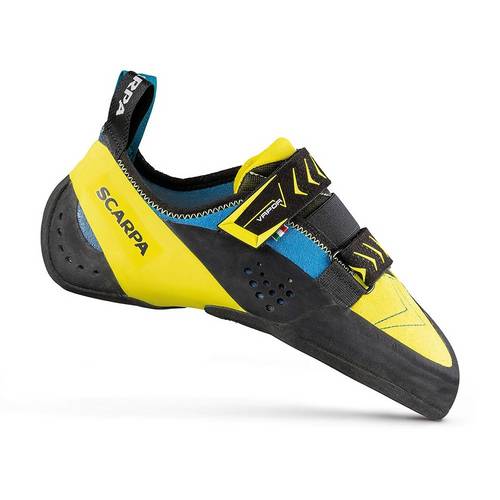If you are new to climbing, you might be wondering how to choose the right size for your climbing shoes. Climbing shoes are designed to fit snugly and provide optimal grip and performance on different types of terrain.
However, finding the perfect fit can be tricky, as different brands and models have different sizing systems and shapes.
In this comprehensive guide, we will explain how to size your climbing shoes correctly, what factors to consider, and where to find the best climbing shoes on sale.
How to Compare Different Sizing Systems?
One of the challenges of finding the right size for your climbing shoes is that different brands and models may use different sizing systems. The most common ones are US, UK, EU, and CM.
These systems are based on different units of measurement and different scales, so they are not directly comparable. For example, a US size 10 may not be equivalent to a UK size 10 or an EU size 10.
To compare different sizing systems, you need to convert them to a common unit of measurement, such as centimeters (cm). You can use online conversion tools or tables to do this.
For example, here is a table that shows some common conversions between US, UK, EU, and CM sizes for men’s climbing shoes:
| US | UK | EU | CM |
| 6 | 5 | 38 | 24 |
| 6.5 | 5.5 | 39 | 24.5 |
| 7 | 6 | 39.5 | 25 |
| 7.5 | 6.5 | 40 | 25.5 |
| 8 | 7 | 41 | 26 |
| … | … | … | … |
You can use this table to find out what size you should look for in different brands and models of climbing shoes based on your foot length measurement in centimeters (cm).
For example, if your foot length is 25 cm, you can see that you should look for a US size 7 or 7.5, a UK size 6 or 6.5, an EU size 39.5 or 40, or a CM size 25 or 25.5.

How to Adjust the Fit of Your Shoes?
Even if you find the right size for your climbing shoes based on your measurements and conversions, you may still need to adjust the fit of your shoes to make them more comfortable and suitable for your climbing style and preference.
There are several ways to do this using socks, laces, or inserts. Here are some tips on how to do this:
Socks
Wearing socks with your climbing shoes can make them more comfortable and prevent blisters, especially if you are new to climbing or have sensitive skin.
However, socks can also reduce the sensitivity and precision of your shoes, and make them feel looser and less secure. Therefore, you should choose thin and breathable socks that fit well and do not bunch up or slide around in your shoes.
You should also consider the type and temperature of the climbing environment, as socks can make your feet warmer or cooler depending on the conditions.
Laces
Lacing your climbing shoes can help you adjust the fit and tension of your shoes, especially if they have a lace-up closure system.
You can tighten or loosen the laces to make your shoes more snug or more relaxed, depending on your preference and comfort level.
You can also use different lacing techniques to target specific areas of your feet, such as the heel, the arch, or the toes. For example, you can use a heel lock lacing technique to prevent heel slippage, or a toe box lacing technique to create more space for your toes.
Inserts
Inserts are removable pieces of material that you can place inside your climbing shoes to change the fit and feel of your shoes. They can be made of foam, gel, cork, or other materials, and they can have different shapes and thicknesses.
Inserts can help you fill up extra space in your shoes, provide more cushioning and support for your feet, or correct some foot problems such as flat feet or high arches.
However, inserts can also alter the shape and volume of your shoes, and make them less sensitive and precise. Therefore, you should choose inserts that are compatible with your shoes and foot shape, and that do not compromise your performance.

